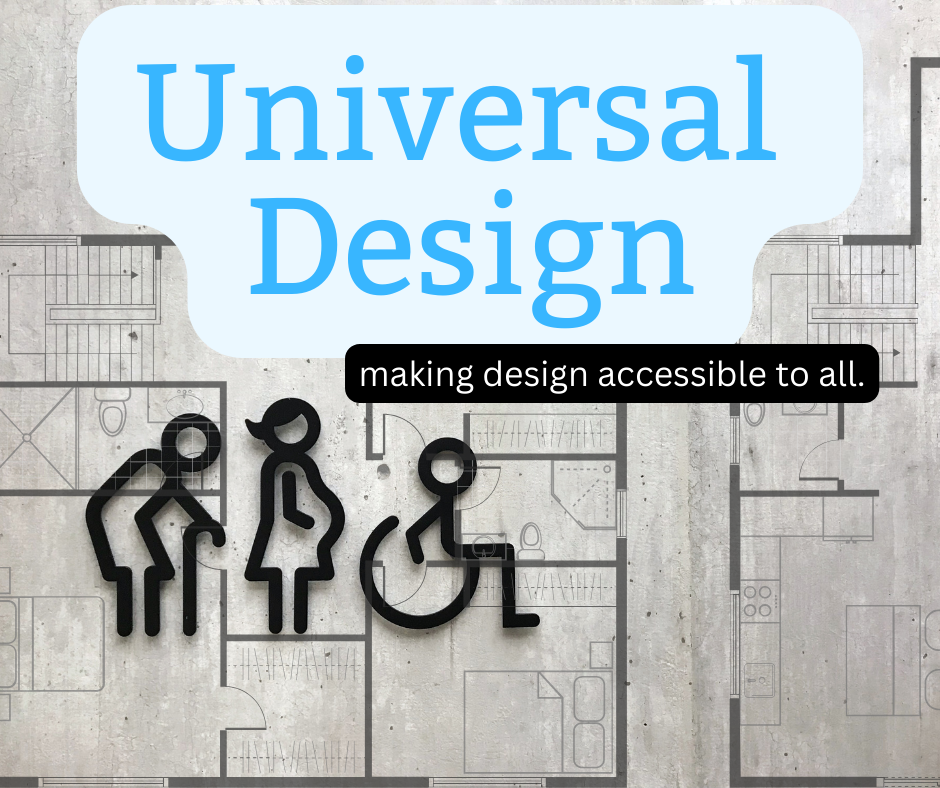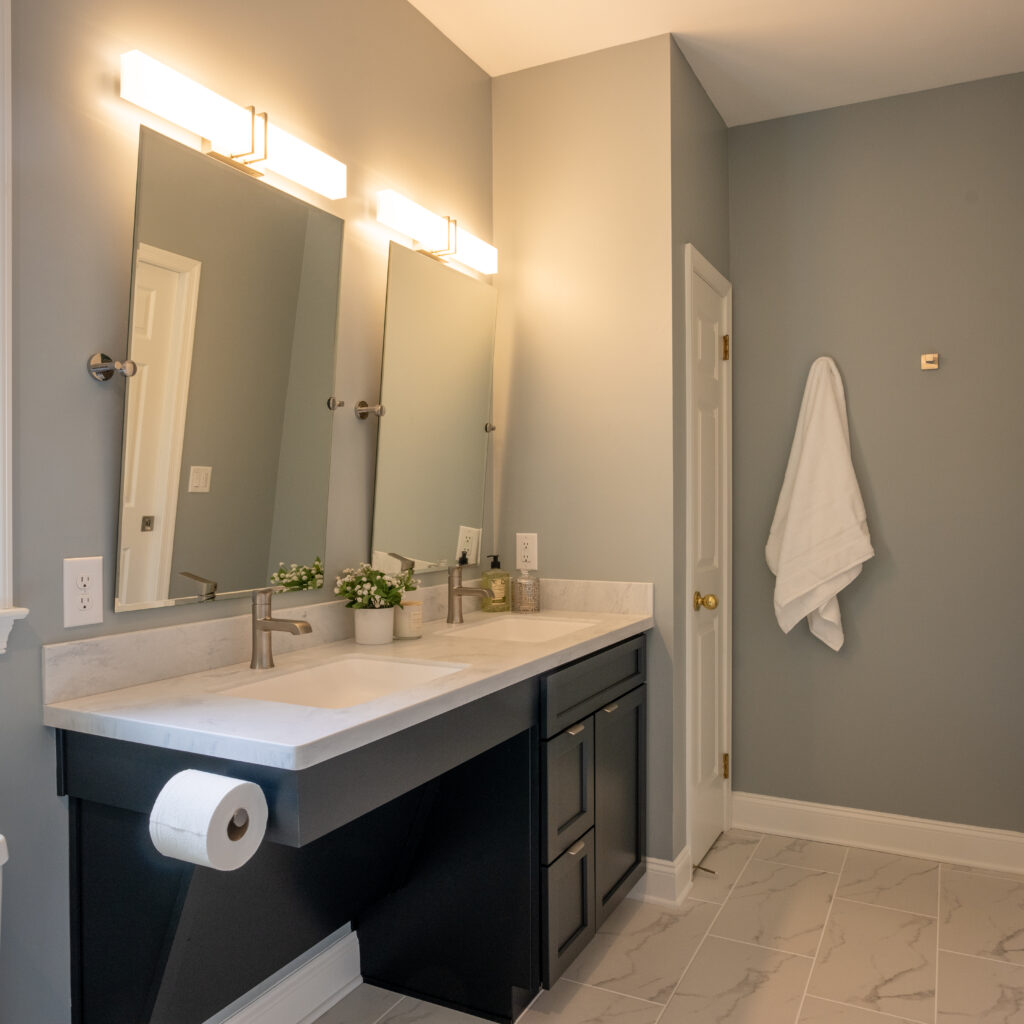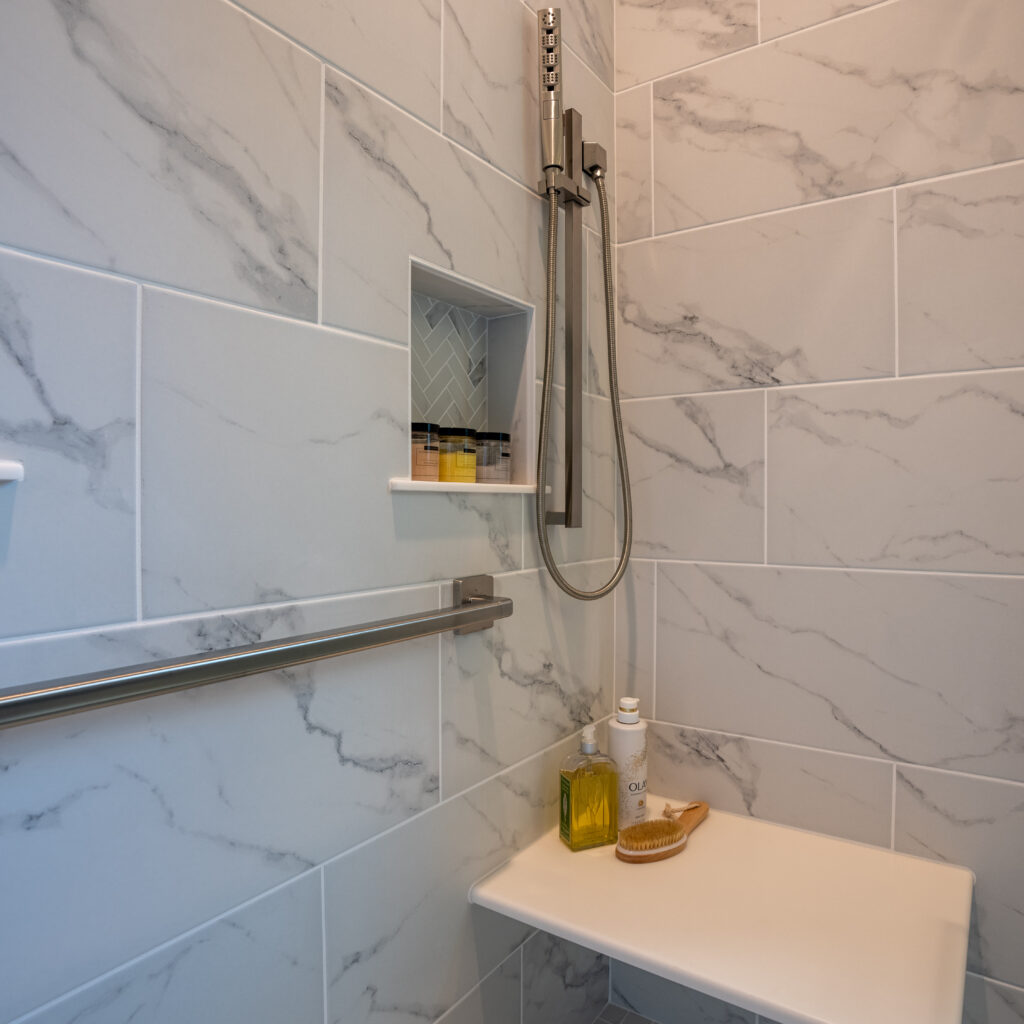
More and more homeowners in Montgomery County and beyond are looking for ways to stay in their homes as long as possible. Additionally, we’re seeing a rising trend of multiple generations living together in one space. With so many family homes having small children, elderly adults, and everyone in between, including principles of Universal Design is becoming more of a priority.
Fortunately, the Custom Craft team has valued the ideas of aging-in-place and Universal Design for years. We’re passionate about designing for all stages of life and including adaptations for all ranges of abilities and sizes.
Wondering what Universal Design is and how it works? We sat down with Custom Craft’s Grace Arndt, a Universal Design—certified professional, to learn more about the principles of Universal Design and how she applied them to a recent North Wales bathroom remodel. Below are the 7 principals, what they mean, and examples of where you can find them around a thoughtfully designed home.
Universal Design Principle #1: Equitable Use
Equitable use means the design is useful, appealing, and provides the same level of function for all individuals. Grace’s bathroom remodel included a zero-threshold shower with a bench inside. With no tub or ledge to trip over, the shower is safer for kids and adults alike, and the bench is useful even when it isn’t a necessity. Besides being safe and convenient, the shower looks spa-like and inviting.

Universal Design Principle #2: Flexibility in Use
Designing with flexibility in mind means providing options — multiple ways to use something based on preferences and needs. Common examples of this are items like right- or left-handed scissors or golf clubs.
The North Wales homeowners happen to be two very different heights, so having angled vanity mirrors that can easily tilt forward or backward ensures they both can actually see themselves while getting ready. It also allows mirror views for those using a wheelchair. Another example of flexibility here is in the shower, where users can choose the stationary or hand-held shower head.

Universal Design Principle #3: Simple and Intuitive Use
When a design is simple and intuitive, it is easy to understand and eliminates unnecessary complexity. Grace mentioned that over the years, faucets have become simpler and easier to use. Virtually all faucets available today meet this requirement — especially the single-handled models like in this recent project.
Universal Design Principle #4: Perceptible Information
This principle considers whether the design communicates necessary information effectively to the user, regardless of ambient conditions (temperature, noise level, lighting, etc.) or the user’s sensory abilities.
Around the home, you’ll find examples of this with anything that uses pictures, sounds, or tactile methods to communicate essential information. A thermostat with both visual (display screen) and auditory (beeping) feedback informs users about the current temperature setting and changes made. Colors are useful here, as well; darker floors and contrasting light walls help those with visual impairments perceive the room’s dimensions more easily.
Universal Design Principle #5: Tolerance for Error
In Universal Design, it’s important to minimize hazards and anticipate accidents or problems. Developing fail-safe features keeps everyone safe — from young children to older adults.
Our featured project includes an accessible vanity where a large space is cut out, allowing seated individuals (or a child on a stepstool) to get close to the sink and mirror. Where the plumbing would normally be exposed in this type of design, it has been carefully covered up. This not only looks cleaner but is also a safety precaution, preventing users’ legs from touching hot pipes and risking a burn. Similarly, Grace says there are options for anti-scald devices on faucets that stop water temperatures from reaching dangerous levels.

Universal Design Principle #6: Low Physical Effort
People should always be comfortable in their homes, and designing so that high-use items are easy to reach and natural to operate is important. Users should be able to maintain a neutral body position and minimize repetitive actions and sustained physical effort.
In Grace’s North Wales project, the existing toilet was low to the ground. In order to make things more comfortable for one, very tall family member and future users with mobility issues, a raised toilet was installed in the new bathroom, making it much easier to get up and down.
Universal Design Principle #7: Appropriate Size and Space
The last Universal Design principle suggests the size and space of rooms and items in the home are easy to approach, reach, manipulate, and use regardless of the user’s body size, posture, or mobility.
When designing the bathroom, Grace made plans to remove a bump-out and install a smaller window to make room for an extra-wide shower. Large showers are ideal when there needs to be room for a second person who is assisting someone, and they also make it easy to move around without bumping into anything.
Have peace of mind knowing you won’t need to move unless you want to by designing your home to fit your family’s needs now and for years to come. Best of all, with a knowledgeable design-build company like Custom Craft, you won’t need to sacrifice great style to get there.
Contact us to get started implementing Universal Design into your home.

